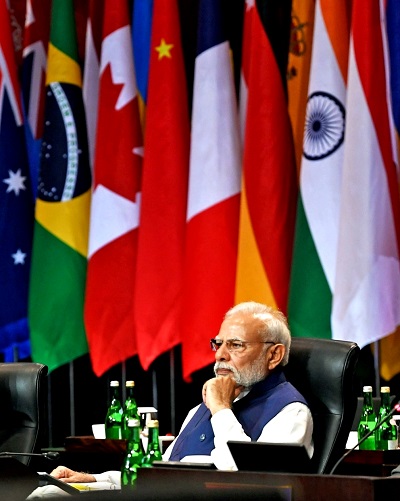New Delhi, (Samajweekly) As India gears up to host the concluding leg of the annual G20 summit in the national capital on September 9-10, it will mark the end of its year as president.
Founded in 1999 following the Asian financial crisis, the G20 was a forum for finance ministers and governors of central banks to come together and discuss global economic and financial issues.
The Asian financial crisis began in 1997 in Thailand and spread to several other countries in a ripple effect, gripping much of east and Southeast Asia and threatening of a global impact. The situation, however, stabilised and recovered by 1998-99.
After the global economic meltdown of 2007, the G20 group was elevated to the level of Heads of State/Government and was named the “premier forum for international economic cooperation.”
This conglomerate includes 19 wealthiest countries of the world and the European Union. Its presidency rotates annually among the member countries.
The G20 countries together account for 75 per cent of global trade and 85 per cent of the world’s GDP, besides comprising nearly two-thirds of the global population.
It is to be noted that the G20 conglomerate is distinct from G20+, a bloc of developing nations established on August 20, 2003. It emerged at the fifth Ministerial WTO conference held in Cancun, Mexico, in September 2003. This group accounts for 60 per cent of the world’s population, 70 per cent of its farmers and 26 per cent of the world’s agricultural exports.
The G20 conglomerate is similarly intended along the lines of BRICS, the 15th edition of which concluded recently in Johannesburg, South Africa.
This group of primarily Brazil, Russia, India, China, and South Africa came together in 2010 after South Africa joined the existing BRIC group that was formed in 2001. BRICS is described as the fastest-growing economies that seek to collectively dominate the global economy by 2050.
For the G20 summit to be held in New Delhi, it was conveyed that Russian premier Vladimir Putin will not be in attendance due to his “busy schedule”. Putin, however, had attended the BRICS summit virtually, reportedly to avoid a possible arrest by the International Criminal Court, which has issued a warrant for Putin’s arrest for war crimes in Ukraine.
However, at the G20, Russia’s invasion of Ukraine is expected to be a talking point.
Another talking point regarding the summit in New Delhi, however, is the controversy surrounding the city decor for the foreign guests. Fountains that are Shivlings are installed in the Dhaula Kuan area of New Delhi, and it is criticised that the revered idol is not a decorative object.
However, another talking point of greater concern is the “standard map” that China released shortly before the summit, and when the Chinese premier is expected to be in attendance at the summit.
China released a map that includes parts of India (Arunachal Pradesh and eastern Ladakh). It is the timing of the release of this map that is most crucial, making the situation difficult to host China, and even casting doubt on whether President Xi Jinping would be inclined to attend the summit in India.
Reportedly, China releases the standard map every year, but the situation this year is clearly different.










